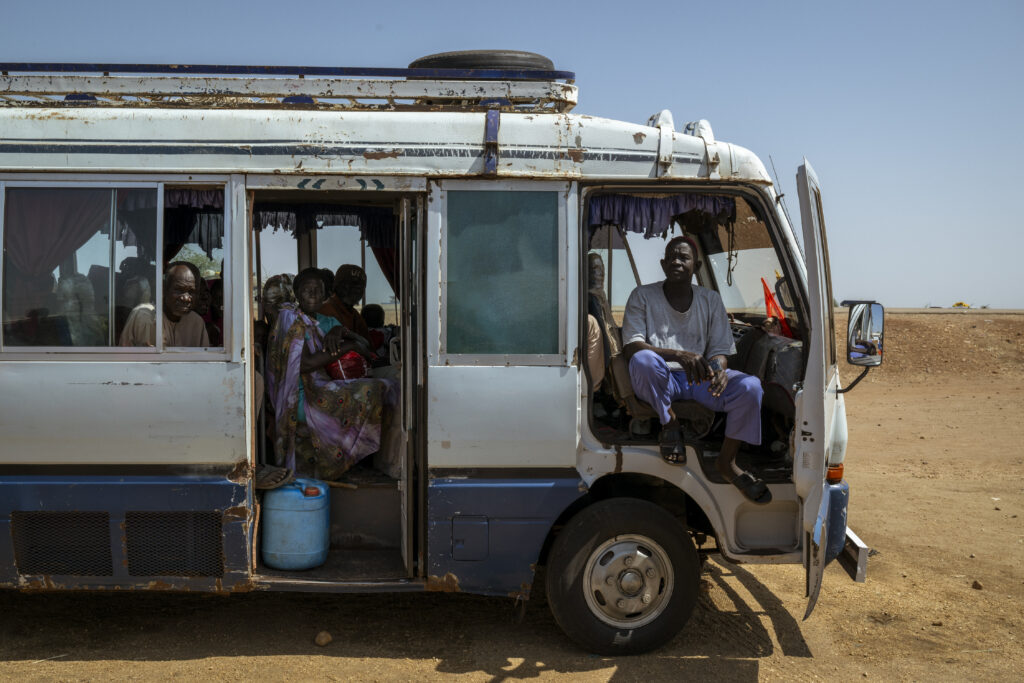Des hébergements d’urgence placés en pleine zone inondable aux habitants qui se ruent vers les boulangeries et écoles au lieu de se calfeutrer, la culture du risque reste faible en France selon des élus et secouristes mobilisés.”On est très très mauvais en France en termes de prévention” et d’anticipation de la gestion de crise, contrairement notamment aux Japonais “confrontés à des aléas plus forts”, résume auprès de l’AFP Jean-Paul Bosland, président de la Fédération nationale des sapeurs-pompiers.”Le climat nous pousse pourtant à nous préparer aux situations catastrophiques” qui sont “de plus en plus fréquentes”, souligne Pascal Cassan, médecin national conseil de la Croix-Rouge française.En moyenne chaque année, 5.700 communes sont touchées par des catastrophes naturelles, selon le ministère de la Transition écologique, et entre 1982 et 2023, quelque 240.000 arrêtés de reconnaissance de l’état de catastrophe naturelle ont été pris. Avec une meilleure préparation, “certaines catastrophes auraient pu être moins dévastatrices”, estime Sébastien Olharan, maire de Breil-sur-Roya, commune des Alpes-Maritimes dévastée en 2020 par une tempête.”On s’est rendu compte pendant la tempête Alex que les centres d’hébergement d’urgence étaient placés dans des zones inondables”, confie l’élu. “On a aussi perdu tout réseau internet et de communication avec l’extérieur. On n’avait aucun moyen de contacter les hameaux alentours”, poursuit-il.Pour le seul risque inondation, 11,9 millions de personnes sont exposées en France.Si plusieurs plans ministériels existent, “le système français fait reposer sur le maire tout le poids de la préparation de sa population aux risques”, estime Sébastien Leroy, maire de Mandelieu-la-Napoule (Alpes-Maritimes), touchée par une tempête en 2024.Les communes ont obligation d’élaborer un plan communal de sauvegarde (PCS), un document opérationnel déterminant l’organisation en cas de crise. C’est non seulement “extrêmement complexe et lourd à rédiger” mais aussi “très cher”, souligne M. Leroy. “C’est dangereux car souvent les communes ont un PCS depuis très longtemps et ne s’en occupent pas”, assure-t-il, et par manque de formation et d’argent, elles “ne font que le relayer sans s’assurer qu’il est opérationnel” ou “copient-collent” celui d’une autre commune. Sollicitée, la Sécurité civile n’a pas souhaité s’exprimer sur le sujet. Quand certaines mairies ont installé hauts-parleurs, panneaux de signalisation ou systèmes de communication par SMS, le maire de Breil-sur-Roya a, depuis la tempête Alex, revu les procédures de gestion de crise. Mais il avance un autre écueil: la “faible culture du risque de (sa) population”. “Beaucoup sont encore incapables d’assimiler une consigne simple telle que +restez chez vous+, car ils ne mesurent pas le danger”, affirme Sébastien Olharan.”Le temps d’un mandat, vous avez 30% de la population qui a changé. Donc, il faut rappeler, rabâcher”, abonde M. Leroy.- “Former partout” -Avec la loi Matras de 2021, les collectivités ont la possibilité de mener des exercices de crise avec les habitants, aussi bien pour tester les mesures que pour préparer la population à réagir.Paris a ainsi réalisé une simulation de crue mi-octobre, et la capitale devrait voir l’ouverture en mars prochain d’un “campus de la résilience” sur le modèle de ceux de Singapour ou Tokyo. “95% des Parisiens pensent que les inondations ne concernent que ceux qui sont près de la Seine”, dit Pénélope Komitès, adjointe en charge de la résilience à la mairie de Paris, alors même qu’une grande partie de la ville peut rester sans chauffage ni assainissement, électricité ou ascenseur, et ce pendant des mois.En parallèle de ces exercices, les associations de protection civile tentent de sensibiliser en permanence la population, en plaidant notamment comme la Croix-Rouge pour la présence dans chaque foyer d’un “catakit”, un sac d’urgence contenant de quoi “boire, manger, se soigner et se signaler”. “À la Réunion, véritable laboratoire des situations climatiques, l’action +Paré pas Paré+ a par exemple permis d’enseigner à 150.000 élèves réunionnais les risques naturels auxquels ils sont exposés”, indique M. Cassan. La technologie est aussi mobilisée. Le gouvernement a ainsi déployé depuis juin 2022 le dispositif FR-Alerte censé prévenir en temps réel tout détenteur d’un portable de sa présence dans une zone de danger. Il a aussi publié récemment sur son site internet un guide pratique, “Tous responsables: un guide pour mieux faire face aux risques”, à l’attention de la population pour la préparer à toute situation de crise.Plusieurs territoires planchent sur d’autres canaux de communication pour parer un éventuel black-out, notamment Paris qui travaille sur ce point avec la Fédération des radios amateurs.






